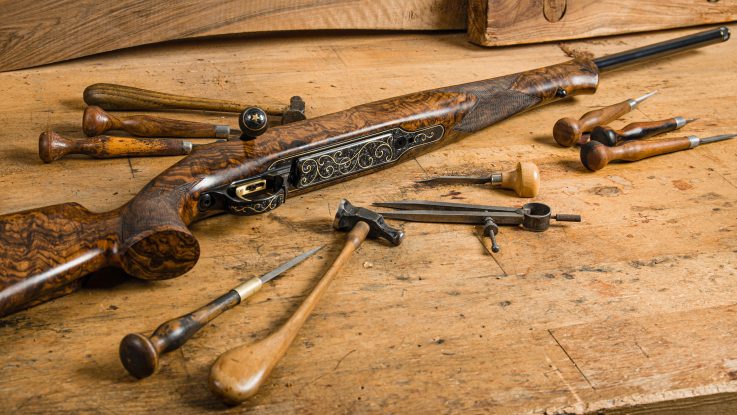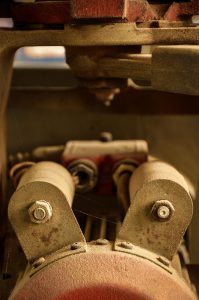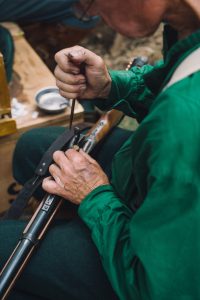
Firearms have entirely changed the world! From revolutionizing warfare to hunting and even sport, it all began in 9th century China when alchemists mixed up a little something called gunpowder. This creation opened the door for the first primitive firearms, such as fire lances.
As time passed, technology eventually improved guns, with matchlock guns emerging in the 15th century, flintlocks gaining popularity during the 17th century, and further advancements such as revolvers and repeating rifles appearing during the 19th century.
Today, antique guns give us a glimpse into the creativity of our ancestors, the battles that defined our world, and how technology and artistry have grown over time.
But preserving such invaluable relics needs an expert eye, lots of hard work, and meticulous attention to detail – no two ways about it!
This article represents a comprehensive guide on properly maintaining and cleaning these stunning pieces of history. From expert advice on handling, cleaning, and storing antique firearms to tips on protecting them from damage that might diminish their historical significance, we cover it all.
Understanding Antique Firearms

Before we jump into how to handle antique guns, it’s worth mentioning that these weapons weren’t made with today’s safety standards in mind. So, they’re fragile, and their mechanisms can be super worn and unpredictable. Because of this, exercise due caution when handling them.
Safety First
No matter what, always treat antique guns like they’re loaded – it’s a super important habit to get into.
Keep the muzzle pointing away from people and animals. And never put your finger on the trigger unless you plan to pull it. We’ve all heard these gun safety rules before, but they’re even more critical when discussing antiques.
Are you thinking of acquiring an antique firearm? Make sure it’s safe to handle. We suggest getting it inspected by a pro gunsmith, especially if you do no know the type or model. That way, you can better grasp its condition and function.
Protective Equipment
Wearing gloves when dealing with antique guns is a must – no excuses! Your skin’s oils and acids can aid corrosion and discoloration of the firearm’s metal and wood.
Cotton gloves are usually recommended because they’re breathable and won’t damage the antique firearm. Or, if you’re going to be using any gun-cleaning solvents or other chemicals, then nitrile gloves are best.
Proper Handling Techniques
When you’ve got your eye on an antique gun, handle it carefully and respect its age and fragility. Steer clear of engraved areas or parts that look breakable or worn down.
Grab your rifle or shotgun by the stock near its balance point, usually just behind the action – just like you’re about to take a shot!
And when it comes to handguns, get a solid grip on the handle.
Don’t try to force it if an antique gun isn’t budging. Look for expert advice instead of potentially damaging it in the process.
Understanding the Impact of Dust

You must keep antique guns dust-free to maintain their condition. Dust will gradually scratch their surfaces, find its way into the mechanisms, and, with some moisture from the atmosphere, could cause irreversible damage. So, it’s crucial to clean your antique firearms regularly.
Let’s get started with the basics.
Grab some damp rags or canister vacuums and wipe the item well. Interjections here and there wouldn’t hurt, either.
Once every inch is cleaned up, take out any airtight containers and store your antique firearms safely inside. Close them firmly with seals so no dust particles can sneak in. And voila! Your antique firearms will look showroom-fresh for years to come!
Storage: The First Line of Defense
Storage is your number one ally in the fight against dust, and for antique guns, that means they should be kept in cool, dry locations.
A gun safe or glass display cabinet designed for such items is your best bet to achieve a suitable environment, reducing any dust buildup while safeguarding them from physical damage and unpredictable temperature or humidity changes.
Adding gun covers or bags can give an extra security layer to stave off dust. Opt for those made of breathable fabrics to prevent condensation, which could cause rust.
Regular Cleaning: Your Maintenance Routine
Here is a step-by-step guide you could follow when cleaning antique guns.
Protective Equipment
Before diving in, you want to make sure your gun is safe from the oils and acids on your skin.
Slip on some cotton gloves, like the ones museum curators and archivists use for breathability and gentleness. Alternatively, go with nitrile ones that offer top-notch protection and chemical resistance.
Physical cleaning
Step two involves getting rid of all the grime and grub.
It’s time to tackle surface dust and dirt to kick things off. Grab a soft, dry cloth. Think microfibers, like what you use for your camera lenses or glasses.
Gently wipe down all the exterior surfaces of your gun. Start from the barrel, then move down to the grip, taking extra care not to press too hard or scrub because you might scratch its finish.
Brushing
When it comes to antique firearms, those intricate engravings, sights, triggers, and other nooks and crannies can be an absolute nightmare to dust with a cloth.
In these cases, a soft brush is the perfect tool for that extra precision. An artist’s paintbrush or makeup brush will do the trick. These brushes can reach those tight spaces without damaging or scratching the surface.
Remember: always use gentle strokes when brushing, as no vigorous scrubbing is allowed!
Air cleaning
For the tight spots, compressed air comes in handy. It’s an invaluable tool that can dislodge dirt without damaging delicate parts. Because of this, air cleaning is often relied on for electronics maintenance.
Just remember, when using compressed air on your weapon of choice, always keep the pressure low and aim away from yourself to be extra cautious!
Lubrication
Once you’ve thoroughly cleaned your gun, it’s essential to provide some finish by applying a thin layer of gun oil.
Break-Free CLP would be ideal. This magical liquid works like a charm to protect the metal parts from moisture and rust build-up and creates a protective barrier that wards off any dust mites. Sparingly apply this special solution with a dry cloth and cover every inch.
Important: Avoid using it on wooden parts, as oils can discolor your gun.
Professional cleaning
When your antique firearm needs some extreme makeover, why not take it to a pro?
Experts have the know-how and equipment, like an ultrasonic cleaner for those super grimy bits, to give it a good clean without damaging it. The ultrasonic cleaner uses bubbles from high-frequency sound waves to safely dislodge caked-on dirt and grime!
Regular Checks
Not just your everyday cleaning, but make sure to check your antique guns for any dust that might be building up – especially if they’re on display. Quickly dust them with a soft cloth, and steer clear of any hefty buildup.
Understanding the Materials

Antique guns are usually a mix of metals for the barrel and inner workings, plus hardwoods like walnut or mahogany in the stock and handle.
But watch out because these materials interact differently with environmental changes, like temperatures, moisture, pollutants, dust, and even the oils on your skin.
So, you have to understand the materials to avoid damaging them.
Caring for Metal Components
Metal parts such as barrels, triggers, and internal mechanisms can be in danger of rusting or corroding if not cared for properly.
Moreover, if you damage crucial parts during cleaning, you’ll decrease their value and destroy any historical significance they may have had.
The following sections provide tips on how to properly care for the metal components in your antique guns.
Cleaning
First, take a soft, dry microfiber cloth and gently brush off any surface dust or dirt from the gun.
This meticulous step is essential in preventing the accumulation of pesky particles that can trap moisture and start a whole chain of corrosion.
Start at one end of your gun and wipe tenderly to the other – don’t forget all the crevices, including under the trigger guard, sights, and hammer. We’re not trying to give it a spruce-up, so go easy, or you could scuff the finish.
Lubrication
Once you’re done cleaning, apply a light layer of lubrication!
Gun oil like Ballistol or Hoppe’s No.9 is specially crafted for firearms and provides multiple benefits. It’ll act as an effective moisture repellent to avoid rust and corrosion and help keep dust particles away so your components operate silky smooth.
Lube up your gun by applying a dab of gun oil to a new, dry cloth and wiping down the metal parts with tender care, focusing on friction-rich areas like the trigger and hammer, as they’re extra prone to rust.
But watch out – don’t overdo it with the oil. Too much can ooze into the wooden parts, eventually causing discoloration or weakening them.
Inspection
Examine the gun thoroughly; take a magnifying glass and check every inch of metal, especially areas prone to collecting moisture, like underneath the sights or near the trigger. If you spot any reddish-brown discoloration or small pits, it could indicate rust, so be alert!
If you’re too afraid to risk it and clean the gun yourself, you can always call an expert gunsmith or restorer for advice. Clearing rust is tricky – specific tools are needed, and knowledge is key to preventing total disaster!
You don’t want to risk lowering its value through shoddy workmanship.
Caring for Wooden Components

The wooden components, like the stock and grip, give antique guns that unique vintage vibe. But wood being what it is, it’s vulnerable to humidity shifts and temperature variances, not to mention the oils from your hands.
So, if you want your antique firearms to retain their charm for years, here’s a handy guide on how to look after them!
Cleaning
Cleaning wooden components of an antique firearm on the regular is essential for keeping it in tip-top shape.
Just grab a slightly damp (not soaking) microfiber cloth, then wipe down the components while going with the grain to avoid any damage or scratches. Don’t be too rough.
Once you’ve scrubbed all the gunk off the wood, getting it bone dry is essential, without exceptions. Any leftover dampness can sneak into the wood, resulting in warping or swelling.
Gently pat it down with a soft cloth until there’s nary a drop of moisture left before taking the next step – no need to rush things!
Polishing
Polish your antique gun with specialized products designed explicitly for gunstocks, like Birchwood Casey Gun Stock Wax or Renaissance Wax. These nifty little products will have your old banger firing on all cylinders and protected from the weather and general wear and tear.
Polish the wood by applying a small amount of Renaissance wax to a neat and dry cloth. Take your time moving the wax into the grain with tender movements! Make sure it’s evenly spread out. Adding too much will make the wood sticky.
Once the wax is applied, break out a fresh cloth and give the wood a buff. Circular motions are your best bet for removing dullness; remember to be gentle.
Conditioning
Is your wood looking dry and rough? Then, a wood conditioner could be just what it needs!
For example, products like Howard Feed-N-Wax Wood Polish and Conditioner or Tru-Oil Gun Stock Finish will help give your wood much-needed nourishment, keeping it from cracking and drying up.
Grab a soft cloth and give it a light, even coat of conditioner. Wait a few minutes (or however long the manufacturer’s directions say to), then wipe away any extra. Drenching the wood is unnecessary, as less is more when dealing with conditioners.
Avoiding Damage
Water is the nemesis of antique wooden components! Don’t even consider letting them soak or remain wet, as this could cause significant damage – warping, cracking, or swelling.
If you want to maintain the integrity of your guns, it’s best to avoid this kind of trouble altogether.
Steer clear of potent solvents or caustic chemicals that could strip the finish from the wood or cause it to discolor. If your furniture needs a good scouring or has something sticky stuck to it, a mild soap and water solution often does the trick. But just in case, try a tiny bit of any cleaning product on an inconspicuous area first – better safe than sorry!
Understanding the Enemy: Humidity and Temperature

Humidity packs a punch for antique guns! With high moisture levels in the air, rust, and corrosion on metal components are practically unavoidable.
Wood parts don’t get off so easily either; warping and rotting can be expected. But it’s not just too much humidity that can ruin your gun. Extreme dryness leads to wooden stocks and grips cracking or even splitting.
High and low temperatures can wreak havoc on your aging firearms! Heat causes metal to expand, and cold makes them contract, leading to warping and brittleness.
Wood won’t fare any better, either. The heat will dry it out, while cold air only aggravates rusting in the metal components. So, keep them away from those extreme fluctuations of hot and chilly weather.
Creating the Ideal Storage Environment
Creating the ideal storage environment for antique guns is crucial to preserving them and keeping their historical and monetary value intact.
Managing moisture levels, temperature fluctuations, and dust can make all the difference. Otherwise, these elements may cause unwelcome issues such as rust, corrosion, warping, or cracking on your gun’s functionality. Here’s a comprehensive guide to help you maintain a stable atmosphere around antique firearms.
Climate Control
Proper climate control is a must if you want to protect your antique guns! Keeping the relative humidity at 45-50% and the temperature between 65°F-70°F is vital in ensuring the metal parts don’t rust or corrode and that wooden components don’t warp or crack.
Have you got an annoying moisture problem in your home? You’ll need a dehumidifier if you live somewhere hot and sticky like Florida. That’ll help remove excess humidity from the air.
On the flip side, if you live in an arid climate like Arizona, grab a humidifier to pump some moisture into the atmosphere – it’s great for keeping wood from drying out and cracking up.
Keeping those guns far away from radiators, sunny windows, and other heat sources is essential. Otherwise, you’ll be dealing with intense temperature spikes. But thankfully, air conditioners and heaters can help reign in the climate – giving you some much-needed peace of mind!
Hygrometer
Keeping your storage environment in check is a must! And that’s where a trusty hygrometer comes in. Whether you’re partial to classic analog models or high-tech digital ones that connect to an app on your phone, you’ll find plenty of options. Plus, you can even get real-time notifications and alerts.
Hang the hygrometer in your storage space and stay on top of it – check it often to ensure you’re keeping the atmosphere in the sweet spot. If anything gets out of whack, tune up your climate control.
Insulation
Make sure your space is equipped with the proper insulation. Whether it’s your ceiling, walls, or floor, you can’t cut corners.
Insulation is essential to keep an even keel in your storage conditions; it’s like a guardrail against those temperature swings that could wreak havoc on your precious antique guns! A well-insulated space helps ensure that your firearms remain in peak condition.
Insulation should be a top priority if you aim to store your guns in an attic or basement. Depending on the season, these areas can go from hot to cold in no time.
To solve this problem, use insulation materials to insulate the walls, floor, and ceiling and seal any drafty spots or leaks with weatherstripping or caulk.
If your storage area has windows, it’s a good idea to fit thermal curtains or shades to stop the heat from coming in or out. And remember not to keep your guns near outside walls – that can make them get too hot or cold compared to the rest of the room.
Choosing the Right Storage

Securing your antique guns is essential for keeping them in good condition. It’s important to choose the correct type of storage, from protecting against dust and physical damage to ensuring that your firearms are safe from prying eyes and that fluctuations in temperature or humidity don’t take a toll.
Gun Safes
Gun safes are an ideal way to guard your precious antiques against damage, theft, or unauthorized access. Not only that, they can help regulate the internal climate and reduce any damage caused by temperature and moisture changes.
Fort Knox PB1 Handgun Safe is an incredible model!
It has solid steel construction, fire resistance, and an unbeatable locking mechanism. But it also can’t hurt to peek at Browning’s Medallion series. Their series is impressive and has bigger storage capabilities and built-in dehumidifiers for climate control.
Picking a gun safe is no easy feat, so keep an eye out for features like fire and water resistance ratings, the stoutness and dependability of the locking system, and quality internal padding to keep your guns scratch- and dent-free.
If you’re living somewhere with high humidity, think about safes with built-in dehumidifiers or provisions for installing one.
Display Cabinets
You can also show off your guns in stylish display cabinets. Whether you need extra storage or want to flaunt your decor, these pieces will make a statement and turn heads!
For all gun fanatics, glass-fronted display cabinets are a fantastic way to show off your prized antique collection. Not only do they shield your treasured possessions from dust and wear, but they present them in all their glory.
You can check out the American Furniture Classics 898 Wood Curio with Hidden Gun Cabinet for ultimate UV protection. It’s got tempered glass doors that block sun rays.
When deciding where to put your display cabinet, pick a spot far away from any rays of sunlight or heat sources. Too much sun can damage the wood and metal parts.
Gun Cases
Whether you opt for a soft or hard one, a gun case is an ideal way to store or transport your firearm.
Soft cases like VISM or Bulldog offer good protection against scrapes and minor jostles. However, if you want it secured long-term, you should reconsider its use. That’s because a soft case could create a closed environment that traps moisture, leading to rust and corrosion.
If you’re looking for comprehensive protection when transporting or storing your firearm, hard cases are definitely the way to go. Pelican and Case Club offer durable, waterproof cases that will keep your weapon safely safeguarded in any environment – even one with a high degree of humidity.
And if you need an extra piece of mind against pressure changes due to altitude, many come with pressure relief valves. Moreover, you can easily custom-cut foam inserts to snugly fit your gun for added security.
Conclusion
In conclusion, preserving antique guns shows respect for history, craftsmanship, and the remarkable way technology has evolved. These relics from days gone by act as a reminder of past achievements in invention, conflict, and cultural identity. However, maintaining their condition requires careful cleaning and safe storage.
Getting a handle on the tricky ins and outs of preserving antique guns, from wearing gloves to banishing oil transfer to maintaining humidity levels, drives home the importance of protecting these historical artifacts for future generations.
And if you’re stumped by any feats that appear too daunting or extra delicate, professional help is just a call away.

Leave a Reply